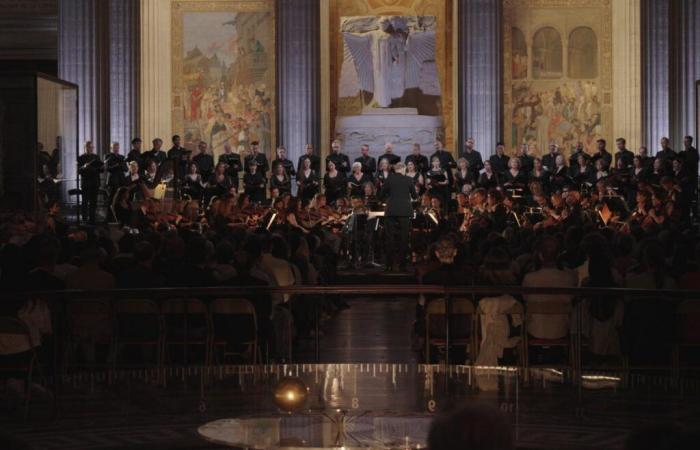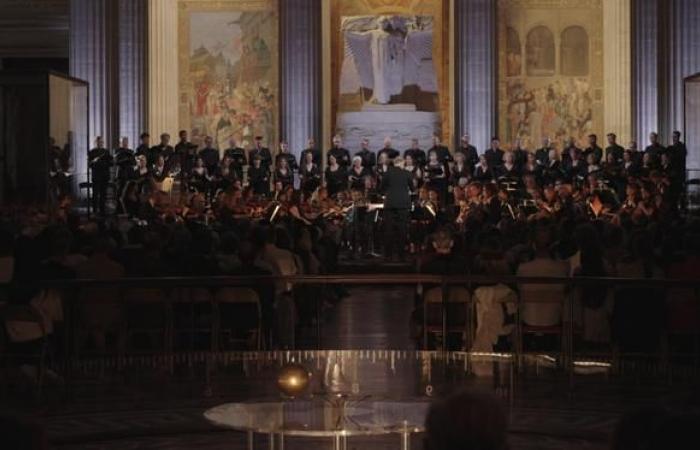ARTE.TV- ON DEMAND – CONCERT
Thomas Hengelbrock (born in 1958) may have chosen his version for large orchestra, but it is a Requiem by Gabriel Fauré (1845-1924) very intimate and clear which he conducted at the Panthéon, in Paris, on September 7, at the head of the Paris Chamber Orchestra, of which he was appointed musical director after the premature death of the conductor and pianist Lars Vogt (1970-2022).
Because there is another version of this well-known work which is one of the most beautiful masses for the dead in the history of music, designed for a small ensemble without woodwinds, with only a few brass instruments, timpani, harp, organ and an ensemble of strings without violin stands, with the exception of a solo bow.
It was performed at the Madeleine church, where Fauré was choirmaster, under various guises between 1888 and 1894. Then, requested by its publisher Hamelle, a symphonic version was published in 1901: less singular, it established itself because orchestras were no longer obliged to dismiss half of their workforce. Goodbye to the seraphic solo violin; hello the curve of the funeral anointing!
Beautiful intimate colors
Fauré, intimate musician − even at the opera, in his Penelope of 1913 −, was surprised by the success of this work: “My Requiem is played in Brussels, and in Nancy, and in Marseille, and in Paris, at the Conservatory!, he wrote in 1900 to Willy, the husband of the writer Colette. You will see that I will become a famous musician! »recalls Jean-Michel Nectoux, the great specialist of the composer, author of the first reliable musicological editions of the two versions of the Requiem.
Read the review (1999): Article reserved for our subscribers The return of “Pénélope” to the Rennes Opera
Read later
It is assumed that it was because of the vastness of the Pantheon, where this inaugural concert of his mandate as musical director was given, that Thomas Hengelbrock, a musician of historically informed persuasion, favored the symphonic version of the Requiem. But, without pathos, he respects the doleful nature of the work, described, as aptly as nicely, as “Lullaby of Death”.
Soprano Katharina Konradi misses the famous Pie Jesus by singing it too low and a little stiffly (the solo was created by a young boy’s voice), while baritone Konstantin Krimmel gives beautiful, intimate colors to his two interventions performed with radiant simplicity.
The soloists and the choir, all German, pronounce Latin in the Gallican style, as was done in the time of Fauré (and even still in the films of Don Camillo with Fernandel, in the 1950s and 1960s). Clear vowels and diphthongs bring a soft and French color to this tender Requiem.
Requiem op. 48 by Gabriel Fauré, by Katharina Konradi (soprano), Konstantin Krimmel (baritone), Balthasar Neumann Choir, Paris Chamber Orchestra, Thomas Hengelbrock (conductor), recording produced by Colin Laurent (Fr., 2024, 43 min.) On Arte.tv until December 3.







